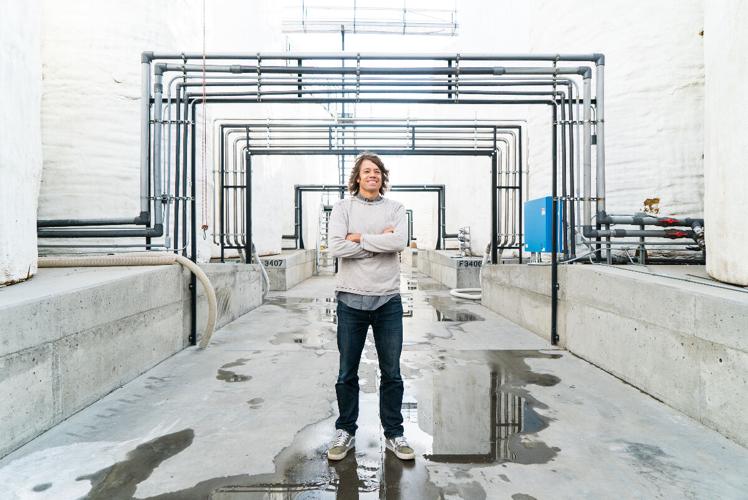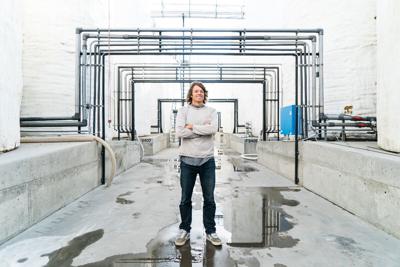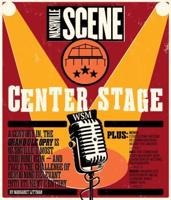There’s probably not another class of wines with as complicated of a history as rosé. Though it was long a favorite among wine drinkers in the Provence region of France, other French oenophiles generally turned their noses up at the pink wine. In America, a generation of 1980s wine drinkers pounded bottles of Sutter Home white zinfandel while simmering in hot tubs across California. (Wait, that was just me?)
In this century, rosé has gained a lot more popularity in America, but there is still a large portion of the offering that is marketed to consumers seeking the pinkest wine they can find, a factor determined by the amount of time the juice is exposed to the skin of the grapes, which is not any sort of dependable indicator of quality. Even worse, tanker loads of rosé end up as the main element of (shudder) frosés like an adult Icee.
The history of how rosé rose in America can be traced back in a large part to one family — Charles Bieler and his father Phillipe. Charles was born of a New Yorker mother and a Swiss father, so he lived a trans-Atlantic existence as a youth. Phillipe became obsessed with the markets of Provence, where he could shop for amazing fresh produce and proteins to pair with a nice bottle of dry rosé. He decided he needed a business reason to spend more time in the region, so he put the wheels in motion to start his own winery.
Despite the fact that French was his first language, Phillipe found little support from the indigenous French winemakers. Forced to fend for himself, Phillipe bought a rundown farmhouse in Provence and set about learning how to make wine. Even without the support of most local winemakers, Phillipe developed his own preferred style of dry rosé, releasing his first wine in the late 1990s. A fan of rosés that were grown in the cooler parts of the region, Phillipe sought out family growers who he could work with to plant his desired varietals of Cinsault and white grenache to create his desired wine.
The only problem was that nobody else desired it — at least at first. He reached out to his son Charles, who was a ski racer at the University of Colorado, and asked for help marketing the wine in America. The recent grad thought that it sounded like a good idea, and he bought an old beater Cadillac, painted it bright pink for attention, and hit the road promoting Bieler’s rosé.
Acceptance was slow and growth was limited until Charles made friends with Calistoga-based vintner Joel Gott, who began selling cases of the Bielers' rosé from his shop. Word spread about how well the dry pink wine paired with food, and the market started to take off, both at restaurants and at retail.
The brand grew until Phillipe sold his winery operation in 2005. Charles was already hooked on the wine biz and plunged forward as a winemaker and marketer. Today, he is part of a broad portfolio of popular wines, most of which are still quite affordable considering the artistry involved in their production.

The brand you probably see most often on local shelves is Bieler Père et Fils, a value rosé that punches well above its weight. At a sound $14 a bottle, Sabine Aix-en-Provence is a fantastic everyday drinker. One reason it stands out on the shelf is its pale-pink color. This is very intentional on Charles’ part.
“I’m actually color blind,” he shares. “We don’t make our wines to color. Paler wines are considered more refined, and the extra skin contact that darker wines get costs them in character. Other producers are designing their bottles to look like perfume bottles and pushing the connection to physical beauty and lifestyle to become the focus. I believe that the color follows the vintage and good acidity and mouthfeel are much more important elements to me."
Sabine is a blend of seven grapes, primarily grenache, syrah and Cinsault, primarily aged in stainless-steel tanks plus a little bit in traditional concrete egg-shaped vessels. Charles started out positioning this wine in the value segment, and in the wine’s 24th vintage, it’s still a great deal. The fact that they produce 100,000 cases per year of the wine definitely contributes to the affordability. The acidity of Sabine manifests itself as a tartness that almost leans to sour, making it a mouthwatering accompaniment to spring and summer dishes.

The next step up in the Bieler Père et Fils portfolio is a more limited release, Bandol Rosé. It's still a value at less than $25 per bottle, and Bieler makes only about 3,000 cases a year, so you’ll probably only see it on restaurant menus. Sourced from a very particular region of Provence that represents about 4 percent of the area’s grape production, Bandol is made primarily using mourvèdre grapes plus a little grenache and Cinsault. The vineyards are planted in a natural amphitheater that faces the Mediterranean, right on the sea so that the coastal fog can have a great effect on the temperature over the course of the day.
The generally mild temperatures allow for a longer growing season and increased complexity in the final product. Because mourvèdre can add a lot of color to wine, Bieler works hard to preserve the lighter shade that he prefers in his rosés by picking the grapes at night so that they can arrive at the winery cold for pressing. The resulting wine exhibits a little bit of tannins, certainly more than you’d expect for a rosé, and it could even stand up to a little cellar time to mature further.
If you like these wines, I encourage you to look for offerings from another of Charles Bieler’s portfolio. He has partnered with Washingtonian winemaker Charles Smith for years to produce some of the first and best West Coast rosés along with an admirable cabernet sauvignon and a red blend under the Charles & Charles label. I haven't had the chance to taste through all these products yet, so maybe we’ll circle back a little later on those.
Until then, cheers!








